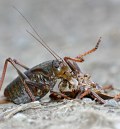A gene associated with disease might vary from a healthy gene in one individual DNA base pair – a so-called point mutation. Investigating point mutations and diagnosing genetic disease would benefit from a simple, cost-effective and rapid sequencing technique.
Now, Japanese researchers have developed a new approach for a miniaturized system that detects small differences in DNA sequences with high sensitivity. In contrast to other methods, this technique works without labeling the bases and exploits a field effect transistor (FET) to detect changes in the charge on DNA molecules.
According to Toshiya Sakata and Yuji Miyahara multiple FETs can feel electrical fields and react to changes by changing the current that flows through their conducting channels. The researchers loaded the surface of an FET with short, single-stranded pieces of DNA. These probes are the exact counterparts to the sequence at the beginning of the DNA segment being investigated. If a sample containing the target DNA comes into contact with the surface, the target DNA binds to the probes. The polymerase chain reaction (PCR) is then used to reconstruct the complete target DNA strand. Cleverly, the team do not use all four DNA building blocks at once but dip the FET into four different solutions, each containing only one of the building blocks, one after the other. After each dip, the electrical characteristics of the FET are measured. If and only if a component has been added to the end of the chain, a change is registered. This occurs because each building block brings with it a negative charge, which changes the electrical field on the surface of the FET. In this way, DNA chains of a length up to about ten components can be precisely sequenced. Missing, extra, or changed nucleotides can be rapidly and unambiguously identified.
You can read more details in Angew Chem Int Edn, 2006, 45, 2225
 Hunger for protein and salt, and a fear of cannibalism, drives the
Hunger for protein and salt, and a fear of cannibalism, drives the